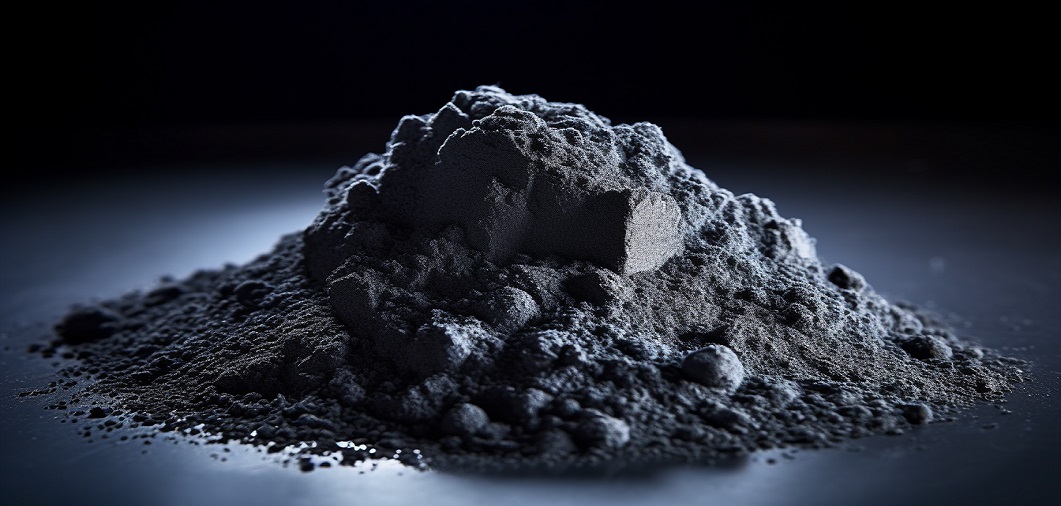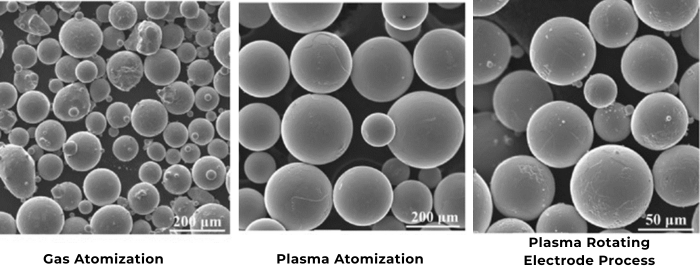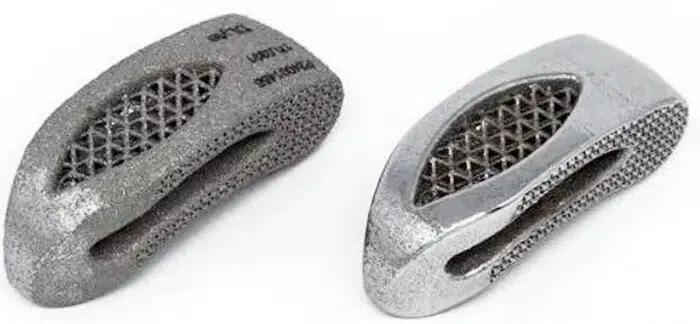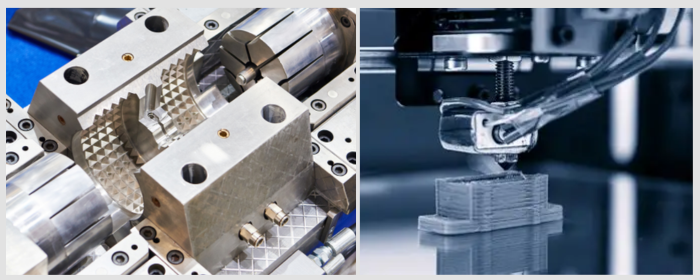

In the case of metal powders, besides considering properties such as sphericity, particle size, and oxygen content, their resistance to heat, corrosion, and oxidation are important features that should be considered. These properties largely determine the practical applications of metallic powders. We will focus on the top 10 metallic powders that perform well based on three characteristics: heat resistance, corrosion resistance, and oxidation resistance.
The performance of heat-resistant metal powders is primarily determined by their melting point, stability at high temperatures, oxidation resistance, and mechanical strength. Due to these characteristics, different metal powders exhibit varying levels of performance in high-temperature applications.
Table 1: An inventory of the 10 most high-temperature resistant metal powders
|
Powder type |
Melting point(°C) |
Description |
|
Tungsten Powder |
3422 |
With a melting point of 3422°C, tungsten powder has the highest melting point of any known metal, making it widely used in extreme high-temperature environments. |
|
Molybdenum Powder |
2623 |
With a melting point of 2623°C, molybdenum powder demonstrates excellent creep resistance in high-temperature environments. |
|
Tantalum Powder |
3017 |
With a melting point of 3017°C, tantalum not only exhibits good corrosion resistance at high temperatures but also possesses exceptional mechanical stability. |
|
Rhenium Powder |
3180 |
With a melting point of 3180°C, rhenium powder has outstanding high-temperature resistance and is commonly used to enhance the high-temperature stability of alloys. |
|
Niobium Powder |
2477 |
With a melting point of 2477°C, niobium is typically combined with other metals to enhance mechanical strength in high-temperature conditions. |
|
Chromium Powder |
1907 |
With a melting point of 1907°C, chromium powder has high corrosion resistance and excellent high-temperature oxidation resistance, making it a common component in high-temperature alloys and coatings. |
|
Titanium Powder |
1668 |
Although titanium has a relatively low melting point, it has excellent strength, corrosion resistance, and oxidation resistance at high temperatures. Therefore, titanium powder is often considered a key member of heat-resistant metals. |
|
Iron Powder |
1538 |
With a melting point of 1538°C, iron itself has moderate high-temperature resistance, but its performance can be significantly improved when alloyed with elements like chromium and molybdenum. |
|
Cobalt Powder |
1495 |
With a melting point of 1495°C, cobalt-based alloys exhibit excellent thermal stability and corrosion resistance at high temperatures, making them ideal for high-temperature applications such as aircraft engines. |
|
Nickel Powder |
1455 |
With a melting point of 1455°C, nickel-based alloys are widely used in high-temperature applications, such as gas turbines and jet engines. |
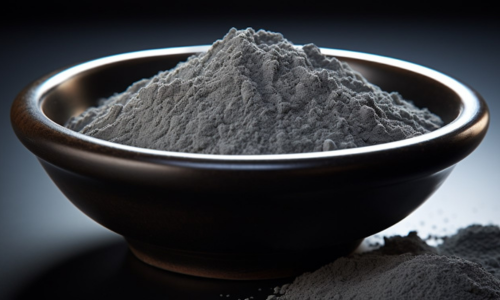
Fig 1. Top 10 Heat-Resistant Metal Powders
Corrosion-resistant metal powders can be ranked based on their resistance to corrosion in various environments. Below is a ranking of commonly used metal powders by their corrosion resistance:
Table 2. List of the 10 most corrosion-resistant metal powders
|
Powder type |
Description |
|
Tantalum Powder |
Tantalum powder exhibits extremely high corrosion resistance in most chemical environments, particularly in strong acidic media such as sulfuric acid and hydrochloric acid, where it remains virtually unaffected by corrosion. |
|
Titanium Powder |
Titanium powder shows excellent corrosion resistance in many aggressive environments, especially in seawater, chlorine gas, and acidic environments. It is widely used in chemical, marine, and aerospace industries. |
|
Platinum Powder |
Platinum has outstanding oxidation and corrosion resistance, particularly in acidic and oxidative environments, where it is almost impervious to corrosion. It is commonly used in electrochemical and catalytic applications. |
|
Niobium Powder |
Niobium offers good corrosion resistance to many acids, particularly excelling in hydrofluoric acid environments, making it suitable for chemical materials. |
|
Molybdenum Powder |
Molybdenum’s corrosion resistance is not as high as that of titanium or tantalum, but it significantly enhances the corrosion resistance of alloys, especially in corrosive environments when alloyed with metals like iron and nickel. |
|
Nickel Powder |
Nickel and its alloys (such as Monel and Inconel) exhibit good corrosion resistance in acidic, alkaline, and saltwater environments, making them important materials in the petrochemical and marine engineering industries. |
|
Zirconium Powder |
Zirconium powder shows strong resistance to acids, bases, and salt solutions, particularly in chloride solutions. |
|
Chromium Powder |
Chromium has good oxidation and corrosion resistance, especially when alloyed with other metals (such as in stainless steel), where it significantly improves corrosion resistance. |
|
Cobalt Powder |
Cobalt and its alloys offer good corrosion resistance in acidic and high-temperature environments, making them common materials for high-temperature alloys and aircraft engines. |
|
Stainless Steel Powder |
Ordinary iron powder has poor corrosion resistance, but stainless steel powders (containing chromium and nickel) have high corrosion resistance, especially in moist or acidic environments. |
These metal powders are typically used in coatings or alloys to enhance the corrosion resistance of materials, making them suitable for marine, chemical, and medical applications where corrosion is a major concern.
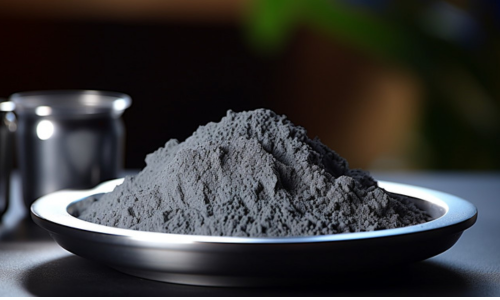
Fig 2. Top 10 Corrosion-resistant Metal Powders
Oxidation resistance denotes the property of resistance of a material against oxidation reactions, that is to say, chemical reactions with oxygen under a high-temperature condition. Oxidation may change the surface of materials due to oxide formation and weaken its strength, corrosion resistance, and other mechanical properties. Those materials having good oxidation resistance will retain their original physical and chemical properties even after being subjected to oxygen or high temperature for a long period of time and can thus extend service life.
Among the properties of metal powders, resistance to oxidation is important; good resistance is usually desired. In good oxidation-resistant metals, a dense oxide layer forms on the surface that really helps in putting a barrier to further oxidation, such as aluminum oxide or chromium oxide. It is also very crucial when performance at high temperatures is needed, as in gas turbines, aircraft engines, heat exchangers, and equipment for chemical processing.
Metal powders can be ranked by their oxidation resistance based on how well they endure high-temperature and oxygen-rich environments. The common ranking of metal powders based on their oxidation resistance is as follows:
Table 3. Inventory of the 10 most oxidation-resistant metal powders
|
Powder type |
Description |
|
Platinum Powder |
Platinum barely reacts with oxygen at high temperatures, giving it excellent oxidation resistance. It is commonly used in catalysts and high-temperature applications. |
|
Aluminum Powder |
Aluminum powder quickly forms a dense layer of aluminum oxide on its surface, effectively preventing further oxidation. This gives it good oxidation resistance, making it widely used in coatings and protective materials. |
|
Chromium Powder |
Chromium forms a stable layer of chromium oxide at high temperatures, providing excellent oxidation resistance. It is a key component in stainless steel and other high-temperature alloys. |
|
Titanium Powder |
Titanium forms a layer of titanium oxide at high temperatures, offering strong oxidation resistance. It is widely used in aerospace and chemical industries. |
|
Molybdenum Powder |
While molybdenum is relatively susceptible to oxidation in high-temperature environments, its oxidation resistance is significantly enhanced when used in high-temperature alloys and coatings. |
|
Cobalt Powder |
Cobalt powder has good oxidation resistance, particularly in high-temperature conditions, and is commonly used in cobalt-based high-temperature alloys and coating materials. |
|
Nickel Powder |
Nickel also has strong oxidation resistance at high temperatures, especially in nickel-based alloys, where it performs exceptionally well in high-temperature turbines and engine components. |
|
Zirconium Powder |
Zirconium forms a dense layer of zirconium oxide at high temperatures, providing good oxidation resistance. It is widely used in high-temperature environments. |
|
Tantalum Powder |
Tantalum exhibits decent oxidation resistance at high temperatures, particularly in moderately acidic and corrosive environments, where it maintains stable chemical properties. |
|
Tungsten Powder |
While tungsten's oxidation resistance is relatively weak, making it prone to forming oxides in high-temperature oxygen environments, its high melting point allows it to perform well in high-temperature vacuum and inert atmospheres. |
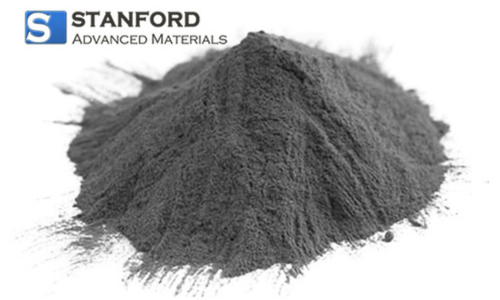
Fig 3. Top 10 Oxidation-resistance Metal Powders
In conclusion, understanding the properties of metal powders, such as heat resistance, corrosion resistance, and oxidation resistance, is essential for selecting the right material for high-performance applications. The table 4 below is a summary of the full text, showing the rankings in terms of high temperature resistance, corrosion resistance, and oxidation resistance.
Stanford Advanced Materials (SAM) is committed to driving research and innovation in spherical powder technology. We offer a variety of 3D printing metal powders, including refractory metal powders, tantalum, titanium, aluminum, stainless steel, cobalt, chromium, nickel, etc. If you are interested, please Get A Quote.
Table 4. Metal powder ranking based on the properties
.png)

